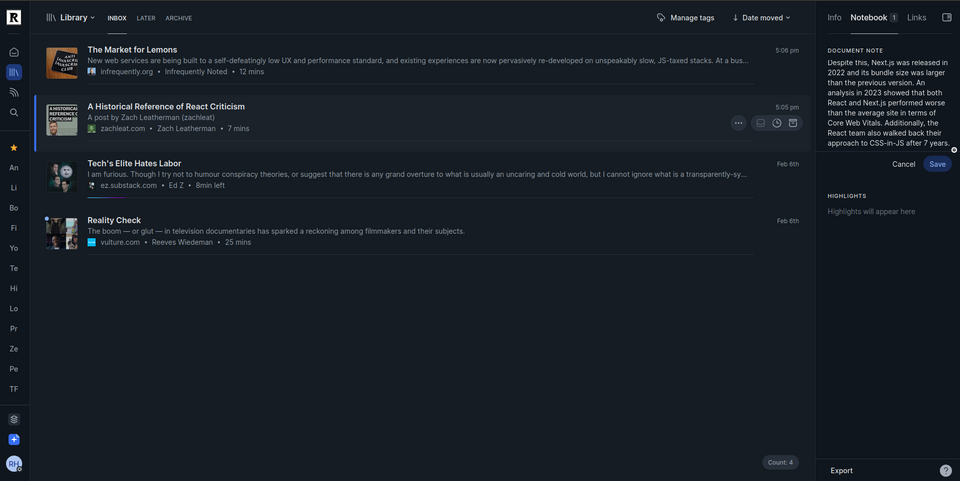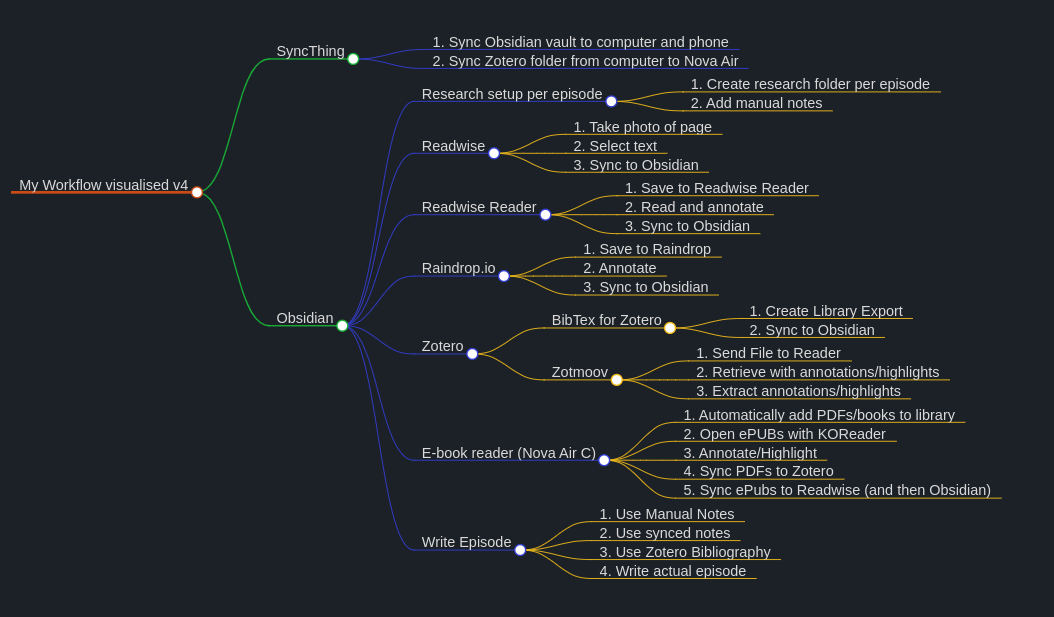Just when I thought I was out, they pulled me back in.
No, I'm not talking about la familia. I'm talking about tools that upend my carefully set up workflow.
Why would a tool do that? Because it just happens to be stupendously good, making me reconsider whatever I'm already using.
One of these tools? The Readwise Reader.
A short history of readers
Before I dive into what the Readwise Reader ist, and what it does, let's take a step back and look at how we consume things on the web (and how we used to).
These days, people get most of their content via social networks. Twitter, Facebook, Instagram and for those whose pain-threshold is higher than average, LinkedIn.
Back in the day, when we had mostly independent blogs and even news websites that still had an interest in being read not just via the funnels of social networks, people also used feed-readers.
They were little tools that let you plug an RSS-feed into them, and after doing so served you the contents of that feed whenever a new item came along. In the case of a blog a new blogpost, in the case of, say, a news website, a new news item.
It was a great time for voracious readers of content, because despite a lot of independent voices scattered all over the Internet, you could always read it in this one centralized location.
There were a lot of feed-readers out there - some were web-based, others were local applications. My favourite was Bloglines, which had just the right amount of bells and whistles, but never felt too cluttered. (Here's a short post on this very website about how I started using it - it was my introduction to feed-readers!)
Everything was fine and dandy, until one new player showed up.
Google Reader
Google had realized that people loved feeds, and with Feedburner, their very own (acquired) tool that let you do all sorts of things with the RSS-feeds you produced, it made sense for them to create their own reader.
Google Reader, in its first iteration, was a bit of a letdown. Clunky, slow, not very usable.
But, and that might sound shocking nowadays, Google listened and worked hard, and eventually Google Reader morphed into the best feed-reader out there. (Here's a post from eons ago, where I extol the virtues of Google Reader).
People ditched their previously loved feed-readers for Google Reader, most of which eventually wound down and found their little plot in the ever-growing graveyard of the Web 2.0.
And that's when Google decided to fuck everything up.
On July 1st of the year 2013, Google Reader was shut down. Sure, there had been quite the decline in usage, mainly due to the rise of the aforementioned social networks.
But Google Reader still had a very loyal following, who were then left to find a new reader. Some went over to Feedly, which is decent enough, but things never were the same.
Funnily enough, even though RSS to consume news had more or less vanished, it managed to thrive in another area - podcasts! While many people don't realize it, RSS is the driving protocol behind podcasts - and certainly one of the reasons it's still the most democratic way to publish.
Anyway, feed-reading mostly died (I still have a self-hosted one, but it doesn't see nearly as much action as it used to).
Newsletters to the rescue
But then something funny happened. As it turns out, people actually like their tailor-made news, more than the reliance on news via Facebook or Twitter would make you think. But RSS, for that purpose, was mostly done, so some genius had the genius idea to simply go back to one of the technologies that's even older than RSS: the trusty old e-mail.
"What about," that person probably thought, "we don't make people visit blogs or news-sites, but instead simply send them e-mails containing whatever we'd have posted elsewhere?"
All of a sudden, one of the worst things of the web, was back: the newsletter.
I'm not entirely sure what demented army of growth-hackers managed to convince, well, just about everyone that cluttering up already hopelessly cluttered inboxes was a great idea, but it worked. New services sprung up that even allowed monetization. And people started paying for newsletters.
In fact, they've become so popular, that there's now specific tools that let you collect all those newsletters, filter them, defer them for later reading and all that jazz. A bit like an RSS-reader, only with a whole lot more moving parts in between.
Which is where I've finally arrived at the actual topic of this post: the Readwise Reader.
One reader to rule them
Anyone who religiously reads each and every single post on here will tell you, that Readwise is one of the services I've incorporated into my workflow.
It lets you save highlights from ebooks, read-it-later services (more about those later) and especially via the camera and very good OCR-processing, from analog books.
It's a great wheel in that most delicate of machineries I've devised to capture everything I read or annotate.
And now they've gone and created something even bigger: The Readwise Reader.
The innocuous name betrays the power that's under the hood there. Because this Reader does it all.
- First and foremost, it's a Read-it-later service. Like Instapaper or Pocket, but with a whole lot more bells and whistles.
- It's also a feed-reader. It lets you add feeds individually, but I just dropped my OPML from the feed-reader I use currently.
- And it's an Inbox for the countless of newsletter that people are being bombarded with these days.
The most important part is the read-it-later functionality, and it does that as good as Pocket (which I've been using for a long while now), and in places even better.
The feed-reader is solid, and the fact that I can now annotate everything just the way I would with something saved to pocket, makes it quite the perfect combination.
Finally, the newsletter inbox is powered by an email you get assigned once you've set up an account with Readwise.
Everything ties into each other, and the main functionality of the original service works like a dream, so everything I annotate (or let summarize by their Ghostreader, an AI powered tool) will be automatically synced to my Obsidian.
Potential issues
Now, in its current iteration, the Reader, which is still only in a public beta, is already quite great. There's no word on pricing yet, at the moment it's free to use (even if you don't have a paid Readwise account). I suspect this will change once it's out of beta.
I don't see why I wouldn't want to pay for it, but I am not yet entirely sure how comfortable I'll be putting just about anything in that one proverbial basket. I'm fairly happy with Pocket, and my feed-reader is self-hosted and does what it's supposed to do.
The idea to go back to a purely third-party hosted service isn't one I'd want to embrace again. That said, with the Obsidian-integration, all my highlights and annotations will be saved to my machine anyway.
And then there's obviously the issue of my current workflow, which might need some tweaking if I adopt Readwise Reader. Fortunately, I like tweaking my workflow, so it wouldn't really be an issue.
All in all, very few issues. I'm looking forward to using it more, and who knows, maybe it'll be part of my next workflow-iteration.
If you want to watch someone explain Readwise Reader in more detail, here's a very good video for you:



